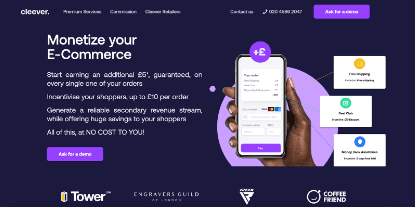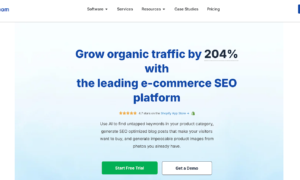Is your e-commerce business struggling to keep its customers loyal? Do you feel like you’re always competing with other companies for the same customer base, and failing to retain them? You’re not alone. Many businesses struggle to build lasting relationships with their customers and end up losing out on valuable opportunities as a result. Fortunately, there are strategies that can help – loyalty programs! In this article, we will explore how implementing an effective loyalty program strategy can help boost customer retention in e-commerce businesses.
Loyalty programs have become increasingly popular within the modern retail landscape because of their ability to encourage repeat purchases from customers. By rewarding frequent shoppers for their patronage, retailers can create a sense of trust and foster brand loyalty among their consumers – something every business wants! Furthermore, these types of incentive schemes provide insightful data about customer behavior which can then be used to make decisions and improve marketing efforts down the line.
So if you’ve been looking for ways to increase customer retention in your e-commerce business, implementing a loyalty program could be just what you need. Read on for more information about how strategizing around loyalty plans can help improve long-term growth for your business!
Have you ever heard of Cleever?
Cleever is an innovative online platform that provides premium services to help e-commerce businesses increase their revenue with ease. By offering customized premium services like free shipping, membership in a discount club, and guarantees that align with their brand, businesses can earn up to £5 in commission for each transaction.
Cleever seamlessly integrates into the checkout process, offering businesses full control of their online shopping experience.
Compared to traditional upselling tactics, Cleever provides a more efficient approach by providing financial incentives to customers like discounts and free shipping, encouraging additional purchases. Cleever’s fixed commission structure ensures that businesses can earn the same commission regardless of the order value.
Cleever’s users have praised the platform for its seamless integration into their website’s design, efficient checkout process, and secure payment processing, fostering customer loyalty and trust. Overall, Cleever offers a valuable solution to e-commerce businesses looking to increase their revenue and enhance their customers’ shopping experience.
Definition Of Loyalty Programs
A loyalty program is a type of rewards program designed to encourage customers to remain loyal to their favorite brands and stores. It allows businesses to reward customers for making purchases, engaging with them on social media, or referring friends and family. Loyalty programs can come in the form of points-based systems, discounts, exclusive offers, and more.
The benefits of loyalty programs go beyond just rewarding customers; they help increase customer retention rates by building relationships with customers over time. By providing incentives that are tailored to individual preferences, companies can make it easier for consumers to become more engaged with their brand. Additionally, loyalty programs enable organizations to better understand their target audience and get insights into what motivates people to buy from them.
Loyalty programs also offer an effective way for companies to track customer behavior and measure ROI (return on investment). With detailed analytics about how customers interact with their products and services, businesses can gain valuable insight into what works best when trying to attract new customers as well as retain existing ones.
Benefits For Customers
The loyalty program offers a variety of benefits for customers to help keep them engaged. Firstly, they can earn points with each purchase that can be redeemed for rewards such as discounts on future purchases or even gifts. This helps build customer trust and encourages shoppers to choose the same store in the future.
Secondly, loyalty programs offer personalized experiences tailored specifically to their customers’ interests. For example, if a customer has purchased a certain type of product before, they may receive emails about similar products or special deals related to those items. This not only provides convenience but also makes customers feel valued and appreciated.
Finally, customers are more likely to become loyal when they have easy access to information about new products and services provided by the company. By regularly sharing news about what is happening at the store, customers feel informed and connected which leads to increased engagement and ultimately better customer retention.
Benefits For Businesses
Moving on from the customer benefits of an e-commerce loyalty program, let’s look at the advantages for businesses. Firstly, such programs enable companies to collect valuable data about their customers through registration forms and transaction histories. Having this information allows them to tailor services and offers that are more likely to increase consumer engagement with the company or brand.
Secondly, when customers have accumulated enough points they can redeem rewards which creates another opportunity for businesses to generate revenue by providing discounts and exclusive deals only available through their loyalty program. This encourages repeat purchases as well as attracts new customers who may be swayed by special offers.
In addition, loyalty programs allow businesses to keep in touch with their customers directly via email marketing campaigns; this is beneficial both financially and in terms of building relationships between brands and consumers. By sending targeted messages tailored to individuals’ preferences, it becomes easier for marketers to identify potential high-value leads and convert them into paying customers.
Challenges To Implementing A Loyalty Program
Implementing a loyalty program presents several challenges. First, there is the cost associated with providing rewards and incentives to customers in order to retain them. This can be difficult for small businesses that may not have large budgets available for marketing or customer retention initiatives. Additionally, offering too many rewards or incentives could lead to customers feeling overwhelmed and may ultimately reduce their engagement with the loyalty program.
Another major challenge is ensuring that customers are aware of a company’s loyalty program so they take advantage of it. Companies need to find ways to promote their programs effectively without overwhelming potential customers with ads and messages. Additionally, companies should look for ways to make joining their loyalty programs as easy as possible by providing clear instructions on how members can join and what benefits are available once enrolled.
It takes time, effort, and resources for companies to create successful loyalty programs that will help drive customer retention rates. However, if done correctly, these investments can pay off substantially over time due to increased customer satisfaction levels and higher sales from repeat purchases. The key is creating an effective strategy that meets both company goals and customer needs while remaining within budget constraints.
Types Of Loyalty Programs
There are a variety of loyalty program strategies that businesses can use to better retain customers. One type of loyalty program takes the form of points-based rewards, in which customers accumulate points for each purchase and receive discounts when they reach certain thresholds. This encourages shoppers to keep returning to the same store or website and makes them feel rewarded for their loyalty.
Another type of loyalty program is the cashback program, where customers get money back according to the amount spent at an establishment. These programs usually have varying levels with higher tiers providing more generous returns as customers spend more. Cashback incentives motivate shoppers to make larger purchases while rewarding their commitment over time.
Finally, tiered membership programs offer exclusive benefits such as free shipping, early access to products, and special sales events reserved just for members. Tiered membership helps create brand ambassadors who will actively promote the company’s offerings to others and even recruit new customers into the loyalty program itself. By offering these kinds of perks, companies can establish strong customer relationships and increase customer retention rates significantly.
Setting Up The Program Infrastructure
Setting up a successful loyalty program requires careful consideration of the infrastructure and processes that will be used to manage it. Establishing clear goals, benchmarks and measures of success is critical for achieving customer retention objectives. It’s also important to ensure that all customers have access to the same rewards and benefits regardless of their purchase frequency or amount.
Creating an effective loyalty program involves more than just offering incentives; the process should also include tools for tracking customer purchases in order to identify opportunities for providing additional value. This includes implementing automated systems with features like points-based redemption options and personalized offers based on individual preferences. Additionally, businesses need to invest time into designing user interfaces that make participating in the loyalty program easily and enjoyable for customers.
To maximize impact, businesses must create promotions tailored to different segments of their audience according to demographic data as well as past behaviors related to purchasing patterns, products owned, and other relevant information. For example, if certain customers tend to buy high-ticket items infrequently, they could be offered exclusive discounts or early access events. By tailoring loyalty programs around specific customer needs, businesses can foster deeper relationships while simultaneously increasing engagement levels across multiple channels.
Conclusion
In conclusion, loyalty programs can provide an excellent opportunity for businesses to increase customer retention and enhance the overall customer experience. By offering unique rewards to their business, companies can create an emotional connection between customers and their brand. Companies should consider carefully which type of program is best suited for their target audience, as well as set up the necessary infrastructure so it runs smoothly. With careful planning and execution, a loyalty program can be a powerful tool in increasing customer satisfaction and long-term relationships with your customers.
It’s also important to remember that loyalty programs require ongoing maintenance if they’re going to remain successful over time. This includes regularly assessing the effectiveness of each program component and making changes where needed. Additionally, you’ll need to stay on top of any new trends or technologies that could impact how you manage your loyalty program. Doing this will ensure that customers continue to feel valued by your company and come back again and again.
Ultimately, implementing an effective loyalty program requires dedication from both sides – both the organization and its customers – but when done right, it can be extremely beneficial; creating more loyal customers who not only come back often but tell others about their positive experiences too!





































